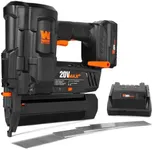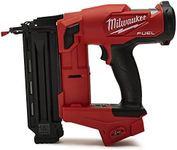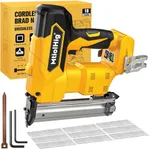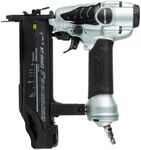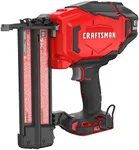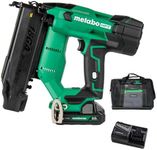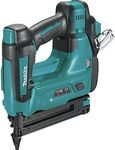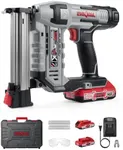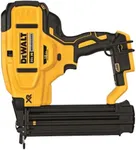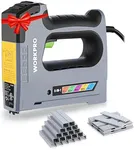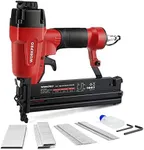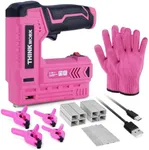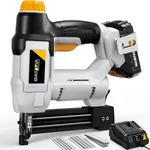Buying Guide for the Best 18 Gauge Brad Nailers
When it comes to choosing an 18-gauge brad nailer, it's important to understand the key specifications and features that will best suit your needs. Brad nailers are essential tools for woodworking, trim work, and other precision tasks. By focusing on the right specifications, you can ensure that you select a brad nailer that is efficient, reliable, and comfortable to use.Power SourceThe power source of a brad nailer determines how the tool is powered. There are three main types: pneumatic (air-powered), electric (corded), and battery-powered (cordless). Pneumatic nailers are powerful and consistent, making them ideal for heavy-duty tasks, but they require an air compressor. Electric nailers are convenient for continuous use without the need for recharging, but they limit mobility due to the cord. Battery-powered nailers offer the most mobility and ease of use, but they may need frequent recharging. Choose based on your work environment and mobility needs.
Nail Length CapacityNail length capacity refers to the range of nail sizes that the brad nailer can accommodate. This is important because different projects require different nail lengths. Most 18-gauge brad nailers can handle nails ranging from 5/8 inch to 2 inches. For delicate trim work or small crafts, shorter nails are sufficient. For larger projects like baseboards or crown molding, longer nails provide better hold. Consider the types of projects you will be working on to determine the appropriate nail length capacity.
Magazine CapacityMagazine capacity indicates how many nails the brad nailer can hold at one time. A larger magazine capacity means fewer reloads, which can save time and increase efficiency, especially on larger projects. Typical magazine capacities range from 100 to 110 nails. If you frequently work on large projects, a higher capacity can be beneficial. For occasional or smaller tasks, a standard capacity should suffice.
Depth AdjustmentDepth adjustment allows you to control how deep the nails are driven into the material. This feature is crucial for achieving a professional finish and preventing damage to the work surface. Depth adjustment can be tool-free or require a tool. Tool-free adjustments are more convenient and quicker to use. If you work with various materials and need precise control over nail depth, look for a brad nailer with easy and accurate depth adjustment.
Weight and ErgonomicsThe weight and ergonomics of a brad nailer affect how comfortable it is to use, especially for extended periods. Lighter nailers reduce fatigue and are easier to maneuver, while ergonomic designs with comfortable grips enhance control and reduce strain. If you plan to use the nailer for long durations or on detailed projects, prioritize a lightweight and well-balanced tool with good ergonomics.
Jam Clearing MechanismA jam clearing mechanism allows you to quickly and easily clear any nail jams that occur during use. This feature is important for maintaining productivity and preventing frustration. Some brad nailers have tool-free jam clearing, which is more convenient and faster. If you want to minimize downtime and ensure smooth operation, look for a nailer with an efficient jam clearing mechanism.
Trigger TypeThe trigger type of a brad nailer can be either sequential or contact (bump) firing. Sequential firing requires you to press the safety tip against the work surface before pulling the trigger, providing more control and safety. Contact firing allows you to hold the trigger and 'bump' the nailer against the surface to fire nails quickly, which is faster but less precise. Choose sequential firing for detailed work and safety, and contact firing for speed on larger projects.
